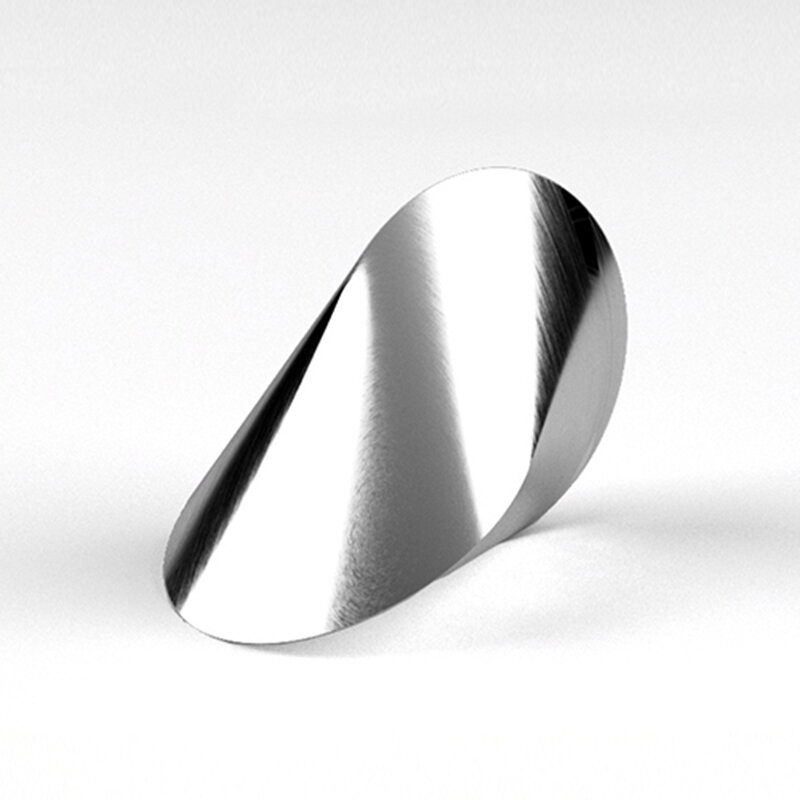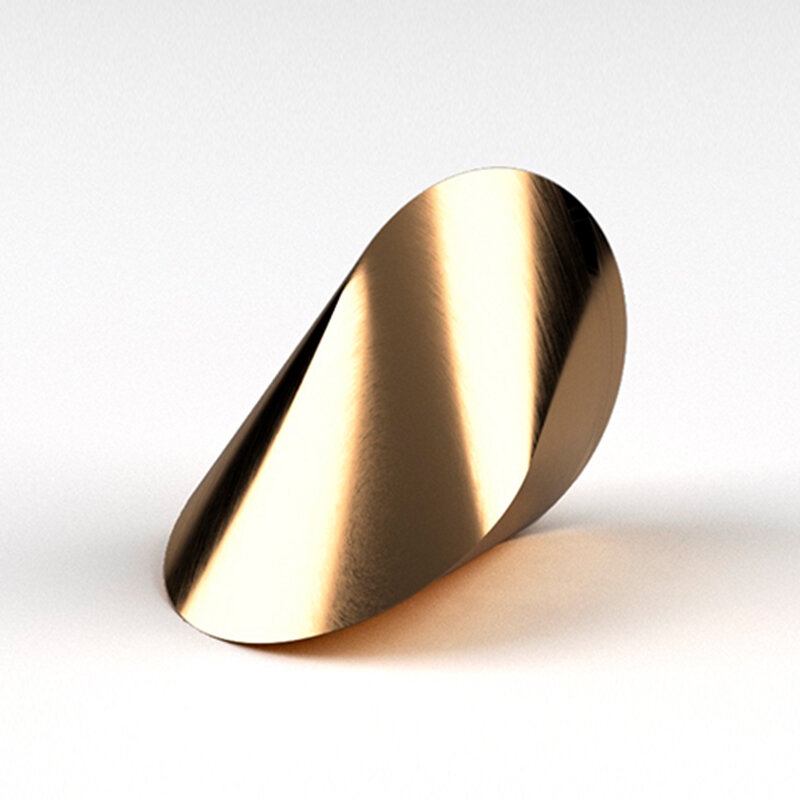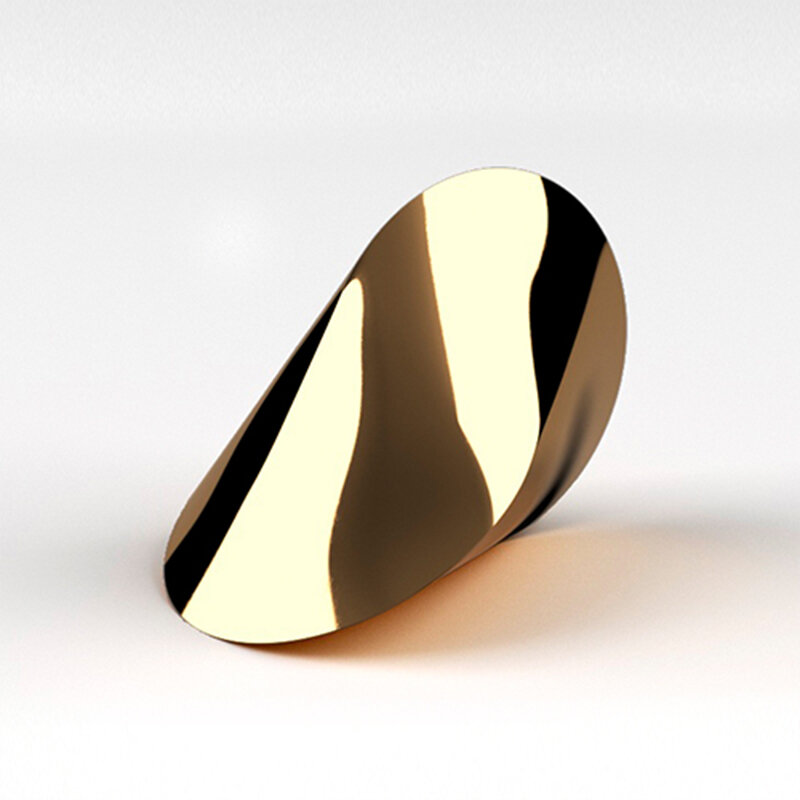THE OLOID
Geometric complexity creates a perfect piece of art.
The oloid is a fascinating geometric shape that is not widely known despite its incredible mathematical and aesthetic properties. It was discovered by Paul Schatz, a German sculptor, inventor, and mathematician, in 1929.
An eye-catching sculpture
The rolling motion of the Oloid is unique and continuous; it is the only non-convex polyhedron that can roll without slipping. Its surface is developable, allowing every point on its surface to be flattened into a plane.
In contrast to most axially symmetric objects, such as cylinders or spheres, when the Oloid rolls on a flat surface, its center of mass undergoes a meandering motion rather than a linear one. Each cycle has two minima and two maxima in the distance between the Oloid's center of mass and the rolling surface.
What is so special about the oloid?
A curved shape with a perfectly straight path.
The Oloid's rolling motion is not just forward and backward, like a sphere, but also has a side-to-side motion.
Sharp edges with a gentle and seamless movement.
Every single point of its surface touches the plane where it is rolling.
Its surface area is identical to a sphere of the same radius.
It has incredible functional properties; the oloid shape can be used for water treatment, as a propeller in navigation, or as a stirrer in biotechnology.
“If the distance of two centers of disk is equal to the radius, then the convex hull produces another figure that rolls smoothly and is known as the oloid. ”






